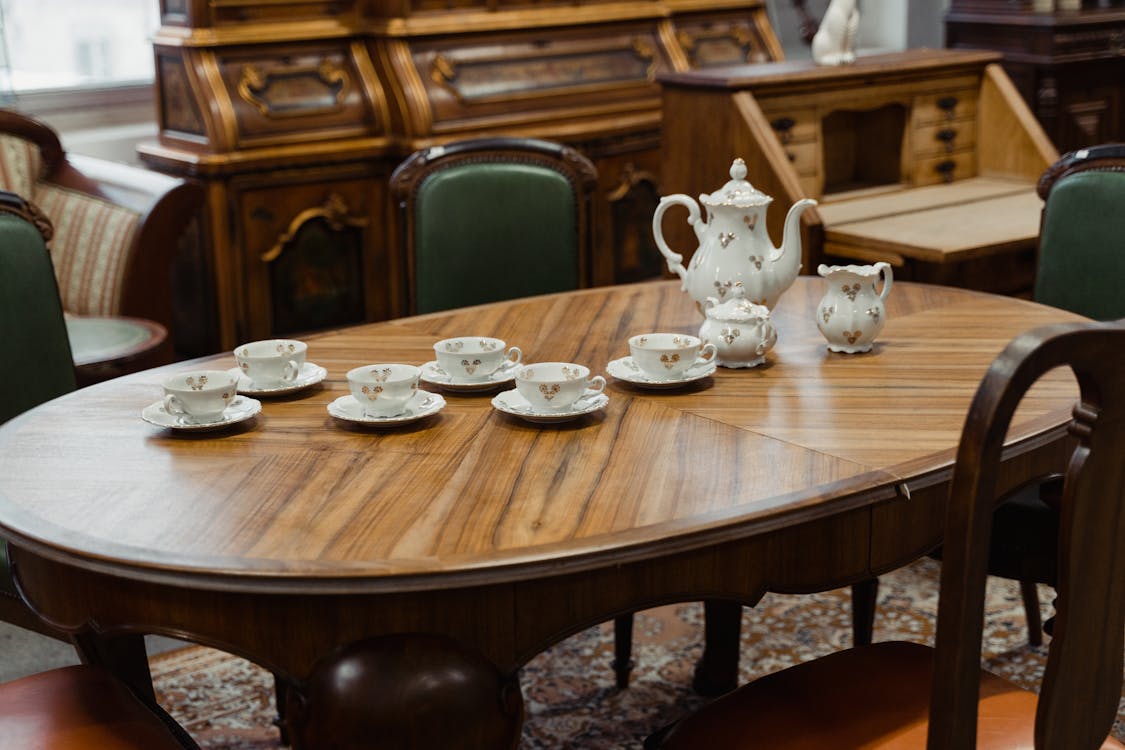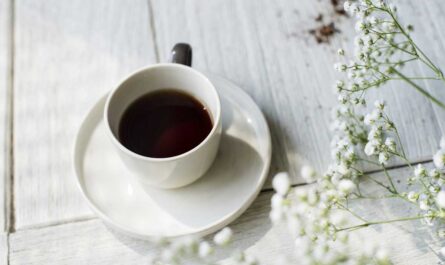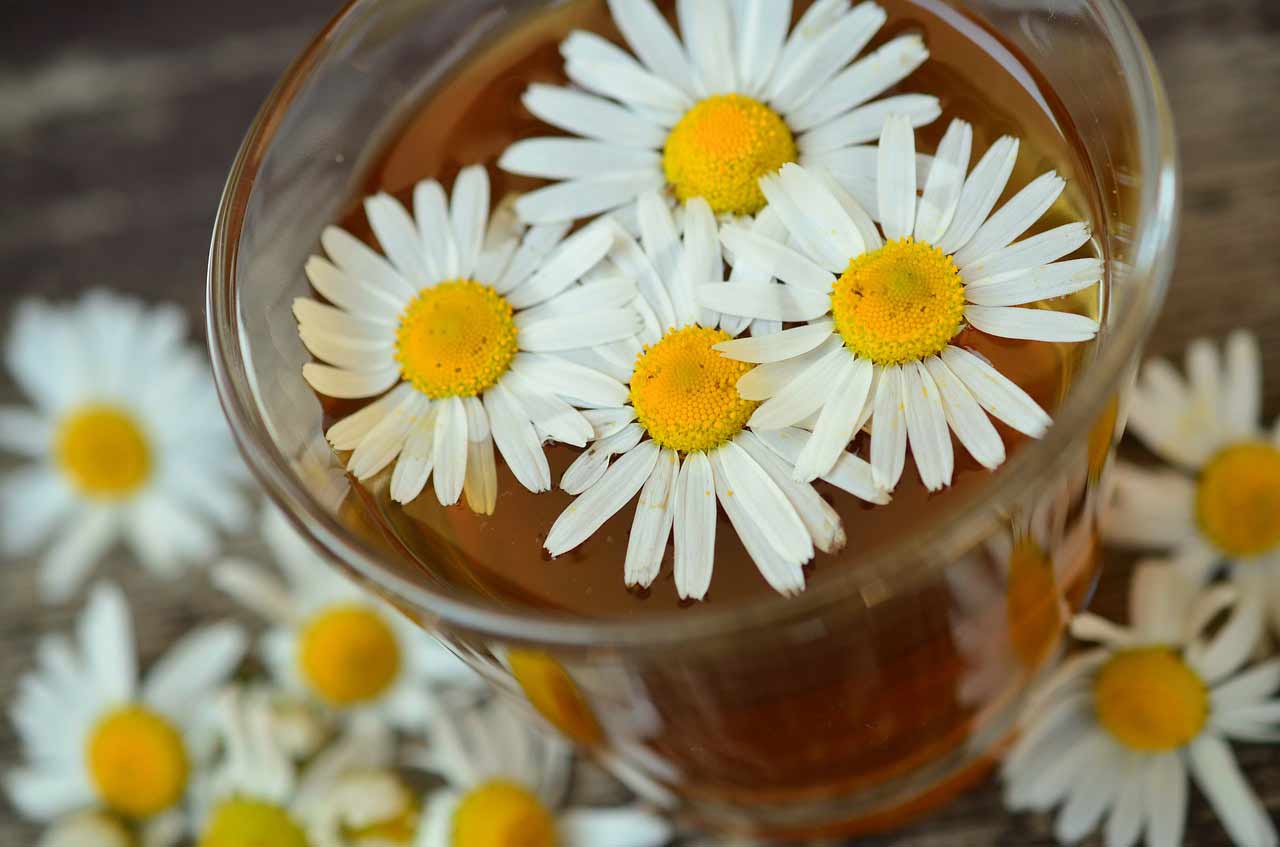Tea in Classic Literature, yourself curled up with a well-loved classic novel. A gentle rain patters against the window, and a warm aroma fills the air. You take a sip from your steaming cup of tea, the flavor mingling with the words on the page. In that moment, the tea becomes more than just a beverage; it becomes a silent companion, a bridge between you and the story unfolding before you.
This is the magic of tea in classic literature. It transcends its physical form to become a narrative device, adding depth, texture, and symbolism to the stories we cherish. This article invites you on a literary journey, exploring the multifaceted role of tea in classic works. We’ll delve into the historical context of tea consumption, analyze how tea functions as a symbol and plot device, explore tea’s role in character development and social commentary and celebrate the diverse ways authors have used this simple beverage to enrich their narratives.
From the bustling teahouses of Jane Austen’s novels to the introspective moments of solace found in a cup of tea in Marcel Proust’s masterpiece, prepare to be surprised by the ways a seemingly ordinary drink can elevate the art of storytelling. So, settle in with your favorite cup of tea, and let’s embark on this exploration together.
A Steeped History: Tea and its Journey into Literature
Tea’s journey from a humble leaf to a literary muse is a fascinating tale in itself. This aromatic beverage boasts a rich history that has left its fragrant mark on countless works of literature. Let’s embark on a literary exploration, tracing tea’s evolution and its reflection of social mores throughout the ages.
From Forbidden Leaves to Social Elixir: A Global Infusion
Imagine a time when tea leaves were considered a rare and precious commodity. Our story begins in ancient China, where tea was first revered for its medicinal properties. Legends abound about its discovery, with some attributing it to the legendary Shennong, the Divine Farmer, who tasted hundreds of plants to identify their benefits. Over centuries, tea consumption in China blossomed, becoming intertwined with spiritual practices, philosophical discussions, and everyday life.
Fast forward to the 17th century, and tea embarks on a global voyage. European explorers, captivated by the unique beverage encountered in their travels, brought it back to their homelands. Initially, tea was a luxury enjoyed by the wealthy, a symbol of sophistication and exotic allure. However, as trade routes expanded and production methods improved, tea gradually became more accessible, transforming from a forbidden leaf to a social elixir.
Tea and Intellectual Circles: Tea houses and salons became popular meeting places for intellectuals and artists. The stimulating properties of tea, coupled with its ability to promote focus and conversation, made it the perfect accompaniment for lively discussions on philosophy, literature, and the latest scientific discoveries. Literary giants like Samuel Johnson and Alexander Pope were known to frequent these establishments, their creative sparks perhaps ignited by a steaming cup of tea.
A Beverage for All Occasions: Tea transcended social boundaries, becoming a staple in homes across Europe. Afternoon tea rituals emerged, offering a welcome respite from the day’s activities and a platform for social gatherings. The act of brewing and sharing tea became a symbol of hospitality and connection.
Remember: The next time you sip your tea, take a moment to appreciate its rich history. Each cup is a testament to a fascinating journey, from ancient Chinese origins to its enduring role in social interactions and literary inspiration.
A Sip of Society: Reflecting Social Mores in Literature
Literature serves as a mirror reflecting the social norms and customs of different eras. Tea, as a beverage deeply woven into the fabric of society, frequently appears in literary works, offering subtle insights into the prevailing social codes:
-
A Mark of Refinement: In Jane Austen’s novels, for example, the ability to properly brew and consume tea is a mark of social refinement. Characters who fumble with teacups or lack knowledge of tea etiquette risk social faux pas.
-
A Catalyst for Interaction: In works like “Pride and Prejudice,” tea functions as a social lubricant, facilitating conversation and setting the stage for pivotal plot points. The act of offering and accepting tea becomes a subtle dance, revealing the characters’ social standing and hidden agendas.
-
A Window into Everyday Life: The depiction of tea consumption in literature can also offer a glimpse into daily routines and social customs. Charles Dickens’s novels, for instance, might showcase tea as a source of comfort and sustenance for characters from all walks of life.
Beyond the Page: By analyzing how tea is portrayed in literature, we gain a deeper understanding of the social mores and cultural nuances of different eras. These literary sips allow us to travel back in time and experience the world through the eyes of the characters.
Remember: The next time you curl up with a good book, pay attention to how tea is depicted. It might just offer a fascinating glimpse into the social landscape of the story.
Beyond Refreshment: Tea as a Symbolic Device
Tea in literature transcends the realm of a mere beverage. It becomes a powerful tool for storytelling, catalyzing conversation, a lens into character, and a symbol of comfort and respite. Let’s delve deeper into how authors weave tea into the fabric of their narratives, enriching our understanding of their characters and plots.
A Brewing Ground for Conversation: Unveiling Secrets and Building Bonds
Imagine a scene: a group of characters gathered around a steaming pot of tea, the air buzzing with conversation. In literature, tea gatherings often serve as a springboard for meaningful dialogue, fostering connection and revealing hidden truths:
-
Sparking Important Discussions: The relaxed atmosphere created by a shared cup of tea can encourage characters to lower their guard and engage in open and honest conversations. Secrets are unveiled, plans are hatched, and relationships deepen over steaming cups of tea. Think of pivotal plot points in novels like Jane Austen’s “Pride and Prejudice” or Virginia Woolf’s “Mrs. Dalloway,” where afternoon tea becomes a platform for characters to navigate social complexities and unveil their inner selves.
-
A Stage for Social Dynamics: Tea gatherings can also be a microcosm of the larger social order. Observe how characters interact – who pours, who chooses the tea, and the overall etiquette displayed. These subtle details can reveal power dynamics, social anxieties, and hidden agendas simmering beneath the surface.
Beyond the Page: The next time you share a cup of tea with friends or family, consider the power of conversation. Let the relaxed atmosphere foster connection and create a space for meaningful dialogue.
Steeping in Character: A Sip that Reveals All
Just like choosing your favorite outfit expresses your personality, a character’s tea preferences, and rituals can offer a glimpse into their inner world:
-
A Reflection of Refinement: In some stories, tea etiquette becomes a marker of social standing. Characters who possess a refined palate and adhere to proper tea rituals might be seen as sophisticated and well-educated. Think of the meticulous tea ceremony depicted in Arthur Golden’s “Memoirs of a Geisha,” where the protagonist’s mastery of the ritual reflects her discipline, dedication, and adherence to tradition.
-
A Window into the Soul: Beyond social standing, a character’s tea choices can hint at their personality and emotional state. Does a character prefer a strong, robust black tea to face a challenging day? Or perhaps a soothing cup of herbal tea offers a moment of solace amidst emotional turmoil? Authors use these details to paint a richer picture of their characters, allowing readers to connect with them on a deeper level.
Beyond the Page: The next time you reach for a specific tea, consider why you chose it. Are you seeking a burst of energy, a moment of relaxation, or simply a comforting ritual? Understanding your own tea preferences can offer insights into your own personality and emotional needs.
A Cup of Comfort: A Moment of Respite in a Chaotic World
Life can be overwhelming, and literature offers us characters who find solace in the simple act of brewing and sipping tea. Tea rituals become a refuge, offering a temporary escape from the pressures of everyday life:
-
A Moment of Reflection: Imagine Bilbo Baggins from J.R.R. Tolkien’s “The Hobbit” enjoying his afternoon tea. The steaming cup and familiar routine provide a sense of comfort and normalcy amidst his grand adventure. For many characters, tea becomes a ritual that allows them to step away from the chaos, gather their thoughts, and find a sense of inner peace.
-
A Bridge Between Worlds: Tea rituals can also connect characters to a sense of home and belonging. The aroma, taste, and familiar routine might evoke cherished memories and offer comfort in unfamiliar surroundings. Think of characters like Anne Shirley from L.M. Montgomery’s “Anne of Green Gables” finding solace in a cup of tea with a dear friend.
Beyond the Page: The next time you feel overwhelmed, consider brewing yourself a cup of tea. Let the simple act of preparation and the warmth of the cup become a mini-ritual, offering a moment of respite and a chance to refocus.
By understanding the symbolic power of tea in literature, we gain a deeper appreciation for the stories themselves. The next time you curl up with a good book and a steaming cup of tea, pay attention to how the author uses this versatile beverage to enrich the narrative and reveal the characters’ inner worlds.
Brewing Plot Twists: Tea as a Tool for Storytelling
Tea is more than just a delicious beverage; it’s a narrative device with surprising depth. Astute authors have long recognized the power of tea to not only add texture and atmosphere to their stories but also to propel plots forward and shape character development. Let’s delve into the various ways tea functions as a tool for storytelling:
Simmering Secrets and Fueling Strategies: Tea Gatherings as Crucibles for Plot
Imagine a group huddled around a steaming teapot, the air thick with anticipation. In countless works of literature, tea gatherings become breeding grounds for crucial plot developments:
-
Late-Night Brainstorming Sessions: For characters like Sherlock Holmes, tea fuels their intellectual pursuits. Late-night discussions over steaming cups become a platform for brainstorming theories, piecing together clues, and ultimately, solving mysteries. The shared experience of tea fosters collaboration and keeps the characters focused on the task at hand.
-
A Facade for Hidden Agendas: Tea gatherings can also be a clever disguise for clandestine activities. Characters might exchange coded messages or negotiate secret alliances while seemingly engaged in polite conversation over tea. The seemingly innocuous act of sipping tea can mask a world of intrigue and hidden motives.
-
A Catalyst for Conflict: Sometimes, a simple cup of tea can spark unexpected conflict. A spilled teacup, a disagreement over brewing methods, or even a character’s refusal to partake in the tea ritual can create tension and reveal underlying animosities between characters.
Beyond the Page: Think about your favorite fictional tea parties. How did the setting, the characters, and the tea itself contribute to the overall story?
Breaking the Ice: Tea as a Social Lubricant
Tea ceremonies and casual tea gatherings often serve as social lubricants, easing tensions and creating opportunities for characters to connect:
-
Facilitating Introductions: In stories set in societies with strict social hierarchies, tea rituals can provide a neutral space for characters from different backgrounds to meet and interact. The act of sharing tea becomes a common ground, fostering a sense of ease and allowing for introductions and polite conversation.
-
Building Rapport: Over a cup of tea, characters can engage in casual conversation, share stories, and discover common interests. This shared experience can help break down initial awkwardness and pave the way for deeper connections and friendships.
-
A Platform for Negotiations: Tea gatherings can also be a strategic setting for characters to negotiate delicate matters. The calming atmosphere and shared focus on the tea ritual can create a space for compromise and finding common ground.
Beyond the Page: Recall a time when sharing a cup of tea helped you connect with someone new. Tea rituals can be a powerful tool for fostering social connection in real life as well.
A Sip of Change: Tea as a Catalyst for Transformation
In some stories, tea consumption or tea rituals mark a pivotal moment in a character’s journey:
-
A Symbolic Gesture: In Jane Austen’s “Pride and Prejudice,” Elizabeth Bennet’s acceptance of a cup of tea from Mr. Darcy is a significant turning point in their relationship. This seemingly simple act symbolizes a shift in her perception of him, paving the way for a potential romance.
-
A Moment of Self-Reflection: For some characters, the act of preparing or savoring a cup of tea can be a moment of quiet contemplation. The pause in the action allows them to reflect on recent events, make difficult decisions, or experience a personal epiphany.
-
A Passage of Time: The act of brewing and consuming tea can also signify the passage of time within a story. Skipping ahead to a scene where characters are enjoying tea can subtly inform the reader that significant events have transpired in the interim.
Beyond the Page: Think about a time when a cup of tea helped you process a situation or make an important decision. Tea rituals can offer a much-needed pause and a space for reflection in our own lives.
By understanding how tea functions as a narrative device, we can appreciate the depth and complexity it brings to literature. So, the next time you curl up with a good book and a steaming cup of tea, pay attention to how this seemingly ordinary beverage shapes the story and the characters within it.

A Social Commentary: Unveiling the Layers of Meaning in a Cup of Tea
Tea, in classic literature, transcends the realm of a beverage. It becomes a potent symbol, woven into the narrative to reflect social class, education, and even the potential for connection across societal divides. Let’s delve deeper into how tea functions as a social commentary in literary works:
A Differentiating Factor: Tea and the Stratification of Society
In many classic novels, the presence (or absence) of tea, and the rituals surrounding it, serve as a subtle yet powerful indicator of a character’s social standing. Consider the following:
-
The Opulence of Afternoon Tea: Jane Austen’s novels are a prime example. The elaborate tea parties hosted by the wealthy characters – complete with exquisite china, dainty finger foods, and precise etiquette – become a microcosm of their social status. The ability to navigate these rituals flawlessly signifies belonging to a privileged circle.
-
A Glimpse into Downton Abbey: Even in television adaptations like Downton Abbey, the distinction between the upstairs and downstairs worlds is reflected in tea service. The upstairs family enjoys a leisurely afternoon tea with fine china and delicate sandwiches, while the downstairs staff might have a more hurried and practical tea break, perhaps with simpler fare.
Beyond the Page: This use of tea as a social marker reflects the realities of class structures in different historical periods. Tea, initially a luxury good, became more accessible over time. The rituals associated with its consumption became a way to differentiate oneself within society.
A Sign of Education and Refinement: Brewing Up Belonging
The art of preparing and consuming tea can also be associated with education, refinement, and belonging to a particular social circle. Here’s how:
-
The Mark of a Lady: In novels set in the Victorian era, the ability to brew a perfect cup of tea and preside over a graceful tea party was considered a mark of a lady. Knowledge of tea etiquette, from selecting the proper cups to mastering the art of pouring, demonstrated a certain level of education and social refinement.
-
A Gentleman’s Afternoon Ritual: For gentlemen, afternoon tea at a gentlemen’s club might be a daily ritual. Engaging in conversation over a steaming cup of tea became a way to network, discuss politics, and solidify one’s position within a particular social circle.
Beyond the Page: This association of tea with education and refinement highlights the power of shared experiences. Tea rituals offered a platform for intellectual discourse and social connection within specific social circles.
Breaching Barriers: A Cup of Connection
While tea can sometimes highlight societal divisions, it can also serve as a bridge across them. Here are some instances where tea fosters human connection:
-
A Shared Moment: Imagine a scene in a novel where a wealthy character and a character from a lower social class share a cup of tea. The act of sharing a beverage, regardless of the social standing of the participants, can create a moment of human connection and understanding.
-
A Common Ground: Tea rituals, even if practiced slightly differently across social classes, can provide a common ground for characters to connect. The shared enjoyment of a cup of tea can transcend social barriers and pave the way for meaningful conversations.
Beyond the Page: The ability of tea to bridge social divides is a message that resonates even today. Sharing a cup of tea can be a simple yet powerful way to connect with people from different backgrounds and foster a sense of community.
Remember: The next time you raise a cup of tea, take a moment to consider the rich history and symbolism it carries. It might be a simple beverage, but in the hands of a skilled writer, it becomes a potent tool for social commentary and a reminder of the power of shared experiences.
A Global Cup: Exploring Tea in Literature from Different Cultures
Tea transcends the boundaries of geography and language, weaving its way into the rich tapestry of literature worldwide. While the image of a steaming cup might conjure visions of genteel English parlors, tea has played a significant role in storytelling across cultures. Here, we embark on a literary journey, exploring the diverse ways tea has been depicted in Eastern literature:
Beyond Europe: The Allure of Tea in Eastern Literature
For centuries, Eastern cultures have celebrated tea as a beverage, a cultural touchstone, and a source of inspiration for countless literary works. Let’s delve into some prominent examples:
-
China: The Birthplace of Tea Literature: China boasts the earliest literary references to tea, dating back to the Tang Dynasty (618-907 CE). Poems by Lu Tong and Lu Yu extol the virtues of tea, praising its taste, health benefits, and meditative qualities. Later works, like Cao Xueqin’s epic novel “Dream of the Red Chamber,” showcase tea as an integral part of social gatherings and aristocratic life.
-
Japan: The Art of Tea in Literature: Japanese literature beautifully captures the elegance and serenity of the tea ceremony. Yasunari Kawabata’s “Snow Country” offers meticulous descriptions of the meticulous preparations, precise movements, and tranquil atmosphere associated with this age-old ritual. Sen no Rikyu, a renowned tea master, is even featured as a character in historical novels, highlighting the profound cultural significance of tea in Japan.
-
India: Chai and the Power of Storytelling: Indian literature features tea in a variety of contexts, from everyday life to spiritual quests. Novels by Salman Rushdie and Vikram Seth often depict characters enjoying cups of chai, a spiced milk tea that serves as a social lubricant and a source of comfort. In some works, tea shops become gathering places for philosophical discussions and storytelling sessions, highlighting the power of tea to foster connection and community.
Literary Techniques: Authors use tea in various ways to enhance their narratives. Detailed descriptions of tea rituals can create a sense of cultural immersion, while the act of brewing or consuming tea can become a metaphor for introspection or emotional states.
Beyond the Page: Exploring Eastern literature can inspire a deeper appreciation for the diverse tea traditions practiced around the world. Next time you sip your favorite tea, consider the rich history and cultural significance it embodies.
Cultural Specificity: A Celebration of Nuance
The beauty of tea in literature lies in its ability to reflect the unique customs and practices of different cultures. Authors paint vivid pictures with words, allowing readers to experience the subtle nuances of tea rituals from various regions:
-
The Formality of Japanese Tea Ceremony: Yasunari Kawabata’s “Snow Country” meticulously details the precise movements, specialized tools, and serene atmosphere associated with the Japanese tea ceremony. Readers are transported to a world of quiet contemplation and meticulous preparation, highlighting the cultural significance of this ritual.
-
The Social Hub of the Indian Chai Shop: In works by Salman Rushdie and Vikram Seth, tea shops become vibrant settings for conversations, debates, and storytelling. The act of sharing a cup of chai transcends mere beverage consumption; it becomes a way of fostering connection and community.
-
The Everyday Comfort of Chinese Tea Culture: Classical Chinese poems often depict tea as a source of solace and inspiration enjoyed in everyday life. The act of brewing and savoring a cup becomes a moment of pause and reflection, offering a glimpse into the more personal aspects of Chinese tea culture.
A Celebration of Diversity: By showcasing the diverse ways tea is depicted in literature, we gain a deeper appreciation for the rich tapestry of tea traditions practiced around the world. Each culture offers a unique perspective on tea, enriching our understanding of its history, significance, and enduring appeal.
A Legacy Steeped in Words: The Enduring Appeal of Tea in Literature
Tea, the humble yet comforting brew, transcends the realm of refreshment to become a powerful literary device. From the bustling teahouses of ancient China to the cozy drawing-rooms of Victorian England, tea has graced the pages of countless classics. In this section, we’ll explore the enduring appeal of tea in literature, examining its versatility as a narrative tool and its enduring legacy for future readers.
A Universal Cup, A Timeless Tale: Tea as a Bridge Across Cultures and Eras
Unlike some literary elements that may be rooted in specific cultures or historical periods, tea possesses a universality that transcends boundaries. Consider these aspects:
-
A Beverage for All: Tea is enjoyed across the globe, from bustling Asian metropolises to quiet European villages. This universality allows authors to connect with a wide range of readers, regardless of their background. Whether it’s a steaming cup of green tea enjoyed by a Japanese monk or a robust black tea sipped by a British aristocrat, the act of drinking tea becomes a relatable human experience.
-
A Timeless Tradition: The history of tea cultivation and consumption stretches back centuries. By incorporating tea into their narratives, authors can evoke a sense of timelessness, connecting readers to characters and experiences from bygone eras. Imagine a scene from a historical novel, where a group of revolutionaries strategize over cups of tea – the beverage becomes a tangible link between the past and present.
Beyond the Page: The universality of tea allows readers to connect with characters and stories from vastly different cultures. The next time you sip your favorite tea, take a moment to consider the rich history and global significance of this simple beverage.
A Steaming Cup of Comfort: Tea as a Symbol of Connection and Shared Experiences
Tea ceremonies, afternoon gatherings, and quiet moments of self-reflection – literature portrays tea as a facilitator of connection and shared experiences:
-
A Warm Invitation: The act of offering tea can be a gesture of hospitality and warmth. In stories, characters bond over shared cups of tea, fostering conversations, forging friendships, and creating a sense of community.
-
A Moment of Respite: A steaming cup of tea can also represent a moment of solace and self-care. Characters might seek comfort in a cup of tea after a difficult experience, allowing them to pause, reflect, and gather their thoughts.
-
A Catalyst for Change: Sometimes, tea becomes the backdrop for pivotal moments in a story. Important conversations, confessions of love, or life-altering decisions might unfold over a steaming cup, highlighting the significance of shared experiences.
Beyond the Page: The next time you share a cup of tea with a loved one, consider the power of this simple act to foster connection and create lasting memories.
A Legacy for Future Generations: The Richness of Tea in Classic Literature
The portrayal of tea in classic literature serves as a valuable resource for future generations, offering a deeper understanding of:
-
Cultural Nuances: By delving into how tea is consumed and viewed in different cultures throughout history, readers gain valuable insights into social customs, traditions, and even class structures.
-
Sensory Experience: Authors use evocative language to describe the act of preparing and consuming tea, allowing readers to experience the aroma, taste, and visual beauty of the beverage. This vicarious experience can spark curiosity and appreciation for different tea cultures. Business – Money Making – Marketing – E-commerce
-
A Timeless Theme: Tea, as a symbol of comfort, connection, and contemplation, transcends specific stories and becomes a recurring theme in literature. By understanding this theme, readers gain a deeper appreciation for the universal human experiences explored in these classic works.
Beyond the Page: The next time you pick up a classic novel, pay attention to the role of tea in the story. Consider how it contributes to the narrative and the cultural understanding it offers.
In conclusion, tea is more than just ink on a page; it’s a bridge between cultures, a symbol of comfort, and a testament to the enduring power of storytelling. So, the next time you savor a cup of tea, take a moment to appreciate its rich history, literary significance, and the stories waiting to be brewed within each steaming cup.
Final thought: A Final Sip: A Toast to Tea and Storytelling
As we reach the bottom of our metaphorical cup of literary tea, let’s raise a toast to this remarkable beverage that has found its way onto the pages of countless classic novels. Tea has transcended its role as a simple drink, becoming a powerful storytelling tool used by authors to shape characters, set the scene, and evoke emotions in their readers.
Imagine yourself curled up with a well-loved book, the scent of freshly brewed tea wafting through the air. As you turn the pages, the author might transport you to a bustling London drawing room, where characters exchange witty banter over steaming cups of Earl Grey. Or perhaps you find yourself in a tranquil Japanese tea garden, where a meticulously prepared cup of matcha green tea sets the stage for a contemplative moment.
Tea, in its various forms, has served as a window into different cultures and social customs. From the elaborate tea ceremonies depicted in Japanese literature to the afternoon tea rituals ingrained in British society, these literary references offer a glimpse into the lives and traditions of people from across the globe. Tea, Coffee, Energy Drinks, Juice, Beverage, Smoothie, and more
More importantly, tea has become a powerful tool for character development. An author’s choice of tea – a character’s preference for a delicate Darjeeling or a robust Assam – can subtly reveal their personality, social standing, and even their emotional state. The act of preparing and consuming tea can become a ritual, a moment of quiet contemplation that allows the reader a deeper understanding of the character’s inner world.
So, the next time you reach for a cup of tea, take a moment to appreciate its rich literary heritage. Let the gentle aroma and comforting warmth transport you to the pages of your favorite novels. And who knows, perhaps your own tea-drinking experience might spark a creative fire, inspiring you to write your own story!
Other Interesting Articles
- 20 Apricot Loose Tea Health Benefits, Recipe, Side Effects
- 20 Vietnamese Lotus Tea Health Benefits, Recipe, Side Effects
- 15 Thai Tea Health Benefits, Nutrition, Recipe, Side Effects
- 20 Rosehip Tea Health Benefits, How To Make, Side Effects
- 20 Mate Tea Health Benefits, How To Make, Side Effects
- 20 Iced Tea Health Benefits, How To Make, Side Effects
- 20 Alghazaleen Tea Health Benefits, Recipe, Side Effects
- 20 Barley Tea Health Benefits, How To Make, Side Effects
- 20 Fortnum and Mason Breakfast Blend Tea Health Benefits
- 20 Fog cutter black Tea Health Benefits, Nutrition, Side Effects
- 20 Twinings English Breakfast Tea Health Benefits, Side Effects
- 19 Taylors of Harrogate English Breakfast Tea Health Benefits
- 20 Orange Pekoe Tea Health Benefits, Recipe, Side Effects
- 20 Proven Health Benefits of Drinking Milk Before Bed
- 20 French Earl Grey Tea Health Benefits, Recipe, Side Effects
- 20 Disadvantages of Drinking Excessive Milk in the Morning
- Fasting Teas During Ramadan: Potential Benefits, Risks, Guide
- 20 Healthy Teas You Can Drink While Fasting in Ramadan
- 19 Health Benefits of Drinking A Cup of Masala Chai Tea
- 20 Health Benefits of Drinking Chamomile Tea Before Bed



